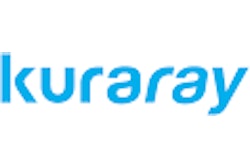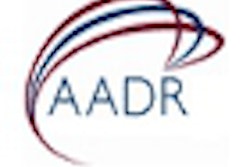
When Kerr launched its OptiBond XTR self-etch adhesive last December, the company touted it as "the best of each generation in one universal system."
A new study in the Journal of Esthetic and Restorative Dentistry (October 17, 2011) tested that claim and found that OptiBond XTR forms excellent bonds to enamel and dentin in vitro when compared with other commercial adhesives.
"Although there was considerable statistical overlap in both datasets, the test material (OptiBond XTR) was in the highest statistical grouping for both enamel and dentin," noted the study authors, from the University of Pennsylvania School of Dental Medicine.
Simplification is an industry-wide goal in adhesives, and three-step etch-and-rinse systems are considered to be the "gold standard," they added. There are also proven two-step approaches such as Clearfil SE Bond (Kuraray), which has a self-etch primer and a separate adhesive.
"Clearfil provides a strong, stable bond to dentin, but is only mildly acidic and therefore provides only a moderate bond to enamel or even a weak bond if the enamel has not been instrumented in some way," the study authors wrote.
Shear bond strength
For this study, the researchers compared the shear bond strengths of OptiBond XTR with OptiBond FL, Clearfil SE Bond, and Xeno IV (Dentsply International). These materials were chosen as representatives of the three-step etch-and-rinse, two-step self-etch, and one-step self-etch adhesive systems, respectively.
“Self-etching primers have been doing great for a long time, but they do not etch enamel that well.”
— Ricardo Walter, DMD, University
of Pennsylvania
The researchers used 80 bovine incisors that had been debrided. Crowns were separated from the roots, and a flat enamel or superficial dentin surface was made with 600-grit silicon carbide paper. Eight groups of 10 teeth were then treated with the four adhesive systems.
In order to test OptiBond XTR, a self-etch primer was applied with a microbrush for 20 seconds in a scrubbing motion, thinned with air-light pressure and the adhesive applied with a brushing motion for 15 seconds. After being thinned with "medium to strong" air pressure, it was light-activated for 10 seconds.
These steps followed the manufacturer's instructions. The other three adhesives were applied using their respective manufacturer's guidelines as well. After polymerization, the specimens were placed in distilled water and stored for 24 hours at 98.6° F. Then their shear bond strengths were evaluated using a model 4411 universal testing machine.
Once the roots were separated from the crowns, the samples were sectioned mesiodistally. To create two 2 x 1-mm rectangles, the facial and lingual halves were further sectioned and then embedded in epoxy resin. Next, the specimens were ground flat and polished, and the primers from Optibond XTR and Clearfil SE Bond applied. One-step Xeno IV was applied as well, while the OptiBond FL system served as a control.
Marginal discoloration
OptiBond XTR fared well in the study and landed in the highest statistical grouping for dentin and enamel. Its performance was similar to that of Clearfil SE Bond on dentin and that of OptiBond FL on ground enamel. Xeno IV was the only adhesive to fall into the last statistical category for enamel bond strength. The two-step adhesives fared slightly better than Xeno IV on bovine dentin, but were in the same statistical category. OptiBond FL fell into the last category.
"This product looked much better than the one with SE Bond," Ricardo Walter, DMD, MS, an assistant professor of preventive and restorative sciences at the University of Pennsylvania, told DrBicuspid.com. "At the end of the day, the results were similar. But on the scanning electron microscope it looked a little better."
SE Bond has eight years of clinical trials that have demonstrated very good durability and low failure rate, noted John Quattrocchi, deputy general manager at Kuraray Dental America.
“We have already developed a new monomer called NDP thatt has a very good bond to calcium and should look good under a microscope as well,” he told DrBicuspid.com.
Acidity likely played a role in the performance of the two-step adhesives, the study authors suggested.
"The roughly 10-fold difference in the acidity of these two primers could account for the differences in their enamel etch patterns and shear bond strengths," they wrote. While both adhesives fell in the same statistical category, the bond strength of Optibond XTR was about 20% greater than Clearfil SE Bond.
Some practitioners opt for selective phosphoric acid-etching of enamel margins prior to application. OptiBond XTR is supposed to etch and bond to dentin and enamel without the need for an acid-etching step, Dr. Walter noted.
"Researchers are always trying to develop something that is easy to use and predictable, so in that regard, self-etching primers have been doing great for a long time, but they do not etch enamel that well," he said. Consequently, the restoration can have marginal discoloration.
Marginal discoloration was an issue with Clearfil SE Bond, and some of the results with OptiBond XTR were not anticipated, Dr. Walter noted.
"When we began this we thought it would do OK in dentin but didn't know what to expect on enamel," he said. "We're surprised that it did pretty well on enamel, actually."
The next step is to test the long-term performance of the test material, according to Dr. Walter.
"The immediate bond strength studies are like screening tools, so now we really need to look at the clinical trials, especially regarding marginal discoloration," he said. "If this material in fact does better than a self-etch bond on enamel, I think it will be the way to go on posterior restorations or even anterior restorations."
The study received funding support from Kerr.



















